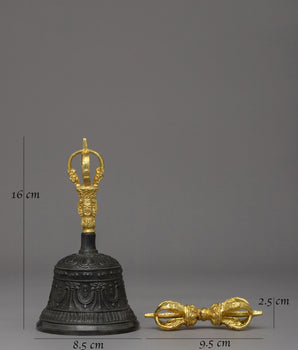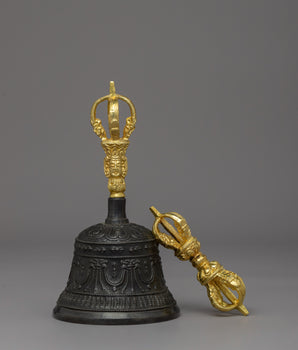Exploring the History, Designs, and Spiritual Meaning of a Timeless Himalayan Tradition
Tibetan incense burners are not only artifacts of ornamentation, but vessels of tradition, spirituality, and artwork representing Himalayan culture. For hundreds of years, new Tibetan incense burners have been built upon the rationale around religious ceremonies, daily prayers, and contemplation developed from the history and insight of many generations of practitioners. In all their forms, from large temple-housed censers to small, portable ones used by itinerant monks, the burners are practical instruments and representational items that, in this context, unite the practitioner and the spirit.
Not only are they intended to diffuse fragrances but to focus intentions, cleanse places and spaces between the material and the divine.” They are designed not only to emanate fragrance but to focus intentions, purify spaces, and bridge the material and sacred. The carvings or castings often found engraved on a burner's surface depict sacred and auspicious motifs such as lotus blossoms or protective dragons, continuous throughout the symbolic landscape of Buddhist philosophy, cosmic balance, and the historical pursuit of enlightenment. A Tibetan incense burner certainly has a breadth of meaning deeper and fuller than merely practical use, and this makes anyone who uses it share a perpetual conversation on the earth of Spirit.
A Brief History and Spiritual Importance of Incense Burner

Incense has been an essential part of Tibetan culture and sociocultural life for over a thousand years, not merely a fragrance, but a sacred offering and a part of the spiritual landscape of the land. Incense is used in much earlier forms in the ancient Bon tradition and then mainly Tibetan Buddhism, where incense was established early on as an integral component of temples, meditation practices, and protective rites.
Traditional Tibetan incense is rolled into thicker sticks as opposed to the long, wood-core sticks of East Asia. It can also be used in loose form, involving the hand-blending of medicinal herbs, aromatic woods, resins, and spices, usually gathered from the high mountains and traded from further distances. Tibetan incense is primarily made in couplings with each partial product usually chosen as much for its scent profile as for its healing and spiritual qualities, e.g., juniper is regarded as purifying; sandalwood is calming for the mind; saffron is considered auspicious and as a way to make offerings and invoke blessings.
Incense burners, whether fashioned of brilliant bronze for grand temples or simply carved of wood for nomadic tents, provided sacred vessels for offerings. The smoke stretching upwards was a link between Earth and Heaven; a pathway for the prayers, mantras, and desires of humanity to transport from the earthly realm to Buddhas, bodhisattvas, and protective deities. Incense burning became a daily devotional act in Tibet, linking it with a timeless ritual that connected fire with the unseen or spiritual world.
Forms and Designs of Incense Burners

Tibetan craftspeople have created endless shapes of incense burners to perform a specific ritual or functional purpose, including large bronze and brass censers of burning incense in larger monastic hall settings, and the tiny travel burners that travelling monks carried in their backpacks. Each shape of incense burner shows a balance of function, beauty, and purpose. Below are the most common types of Tibetan incense burners, along with their unique features.
|
Type |
Description |
Typical Material |
Features |
Primary Use |
|
Standing Censer (Lha-sar) |
Tall free-standing burners, often with fanciful bases |
Brass or bronze |
carving of lotus petals, dragons, or clouds |
Temple ritual, large-scale ceremony |
|
Box or Tube Burners |
Long, rectangular, or cylindrical burners for thick Tibetan incense sticks |
Wood or metal, often inlaid with turquoise and coral |
Holds coreless Tibetan incense securely |
Supporting and/or burning traditional Tibetan coreless incense |
|
Hanging Censer |
Suspended burners that allow incense smoke to drift freely |
Metal with chain suspenders; may include pierced lids for |
Decorative smoke release |
Ceremonial processions, purification of space |
|
Travel Burners |
Small, portable designs for easy transport |
Small metal or wood designs, typically with closable lids to hold ashes |
Ash containment, easy transport |
For monks, travelers, or personal rituals while traveling |
Uses in the Spiritual Practice of The Incense Burner
In Tibetan culture, incense burners are more than just simple vessels for holding a favorite scent; they are facilitators that engage the practice of burning incense into a ritual filled with intentionality and meaning.
1. Support for Meditation – The soft aroma of Tibetan incense, typically formulated with calming herbs like sandalwood and juniper, can help reduce mental debris, settle the breath, and draw the mind into the present. In monasteries or home altars, the slow rise of incense smoke serves as an object of contemplation and establishes the mind's focus.
2. Offering to Deities - The act of burning incense is an offering to Buddhas, Bodhisattvas, dharma protectors, and local Newar gods as a pure, incorporeal gift. Just as one offers flowers or food on an altar, one is providing the essence of aroma, which is in the context of the practices that became dominant in the Buddhist and Bon traditions, and where smoke is a bridge to the spirit world.
3. Cleansing Space – In the Tibetan understanding, incense smoke carries a cleansing property that disrupts stagnant energy, disperses negativity, and makes space for spiritual work. Incense is typically burned before the setting of the ceremony, prayer, or arrival of guests to clear the physical and energetic space.
4. Ceremonial Markers – The rising smoke of the ceremony is symbolic of moving your prayers, blessings, and intentions from the realm of humans to the realms higher. The account of smoke also gives us a reminder of impermanence - what is solid incense becomes clouds, and also an intermediary between clouds, where the realm of humans meets the realm of the divine.
In every use, the incense burner is much bigger than a vessel - it is a spiritual partner that effectively engages in the rituals of devotion, reflection, and transformation quietly.
Sacred Symbolism of the Incense Burner

Every aspect of a Tibetan incense burner carries a spiritual significance, from its shape to its tiniest detail. Each design serves as a template of visual prayer, as well as an artistic item.
- Lotus- symbolizes purity and awakening in all things as it rises from the mud of worldly suffering.
- Flaming Jewel (Chintamani)- the jewel of compassion and wisdom - grants wishes and releases ignorance.
- Eight Auspicious Symbols- parasol, endless knot, golden fish, victory banner, conch shell, lotus, treasure vase, dharma wheel.
- Dragons- signifier of power, protection, and safeguarding sacred spaces.
Burning incense has a signifier as well. When incense is burned, the matter transforms into nice-smelling smoke, and hence signifies the impermanence of life; while the smoke carries your prayers and offerings upward to the holy.
How to Care For Your Tibetan Incense Burner
A Tibetan incense burner is not just an object; it is a sacred container that deserves your respect and care. By maintaining its beauty and sacredness, you will allow it to continue to bring purpose for many years to come.
Rinse After Each Use - After each use, rinse and clean out the inside of the burner and empty any ash and debris so when you go to use it again, it's still smelling fresh.
Gentle Clean - The use of chemical cleaners can ruin the look of the metalwork or any inlays. Most of the time, a soft cloth with some strong elbow grease will help get the job done.
Revere its Placement - Place in a clean, elevated area, and preferably somewhere above the waist, as you would place any sacred vessel, in a way that honors the object.
Keep for Ritual Use - Caring for your incense burner with purposeful care shows respect not only to the object but also to the Tibetan incense tradition it represents, which is thousands of years old.
By caring for your burner and treating it well, you are honoring not only the craftsmanship of the object but also the tradition it carries with it for multiple centuries.
Modern Interpretation Of Incense Burner

Tibetan incense burners are now treasured not only as sacred objects of ritual, but also as objects of artistry and culture that are researched, preserved, and displayed in museums. The Metropolitan Museum of Art in New York, the British Museum in London, and the Asian Art Museum in San Francisco, in addition to the National Museum of Bhutan, where there are still ceremonial burners used in local festivities. Exemplify institutions that include in their collections Tibetan incense burners that visitors can explore, including the complexity of design and form, symbolic motifs, and their history.
The essence of incense burners can be seen in the way that they are presented in a museum alongside other Himalayan artifacts, illustrating the eons of spiritual traditions in Tibetan Buddhism and Bon that incense functions as part of a practice, both in temples and meditative settings. Their presence in the museum context is enmeshed in both their beauty and sacred provenance, offering visitors a connection to centuries of Himalayan culture. Each exhibit also provides the story of metalwork accomplishments, inlay, carving, and symbols from lotus configurations to dragons and auspicious symbols and calligraphy, which also connect and inspire meanings of their origins.
Conclusion: Honoring a Living Tradition of Devotion and Art
Tibetan incense burners are more than decorative items; they are embodiments of devotion, art, and spirituality. Reflected in their early origins in Bon and Buddhist ritual, to their ongoing usage in modern meditation contexts, and their presence in museums. Representing the relationships between the material and the sacred. Their forms, motifs, and applications encapsulate centuries of cultural knowledge, sophisticated symbolic meanings, and meditative practices where they function both as active tools and passive vessels for intention setting, purification, and contemplation. In engaging the history, the culture, the symbolism, and the care of the burners, we can see how an act like burning incense, which may seem unimportant, links the human to the divine. Somewhere between a temple altar, a personal meditation space, or an exhibition in a museum, Tibetan incense burners stimulate the mind, provoke reverence, and inspire appreciation for a spiritual tradition in both a transcontinental and timeless possibility; Even if worn from use, appreciated in a museum, used as part of a meditation practice, or even presented as an offering, each incense burner has an untold story longing to escape.
Explore Our Incense Burner Collection From Evamratna.











